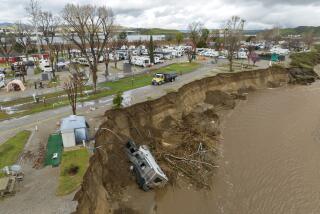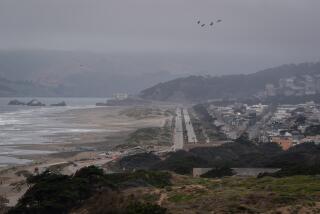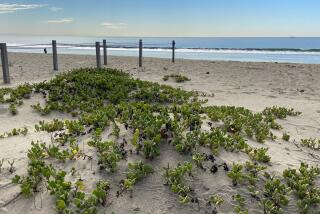Saving coast won’t be cheap or easy
- Share via
There are three primary ways for coastal areas to survive the rising seas predicted with global warming. None is perfect. None is cheap.
The first option is to retreat. Abandon the low-lying area to the oncoming sea and build farther inland. Think parts of the disappearing Louisiana coastline.
But some properties along the coasts are so valuable -- tens of trillions of dollars in value in Florida alone -- and involve so much infrastructure that they can’t be abandoned. Think New York City or Miami.
So in those areas, artificial protection could be devised through earthen levees and dikes. Or there could be costly high-tech solutions. The Netherlands, which is mostly at or below sea level, has the world’s largest flood control system with an intricate system of barriers, levees, sluices, pumps and a gigantic swinging sea gate. The cost over 40 years was about $18 billion to protect a country the size of Maryland.
The cost would be prohibitive to protect all U.S. coastal regions, and such efforts would change some wetlands into freshwater lakes.
The third option is to raise the elevation of buildings and land on the coast. This also is expensive and requires constant battles against the elements. Think parts of the Outer Banks. There, some houses are on stilts, and beach replenishing occurs regularly.
One state, Maine, requires developers to anticipate the future. It has a regulation that demands that sea level rise be considered before permits are issued for new large buildings. That rule has blocked construction of some high-rises.
Susanne Moser of the National Center for Atmospheric Research has studied the sea rise problem and says it may be cheaper to try to slow global warming by cutting fossil fuel emissions.
More to Read
Sign up for Essential California
The most important California stories and recommendations in your inbox every morning.
You may occasionally receive promotional content from the Los Angeles Times.










